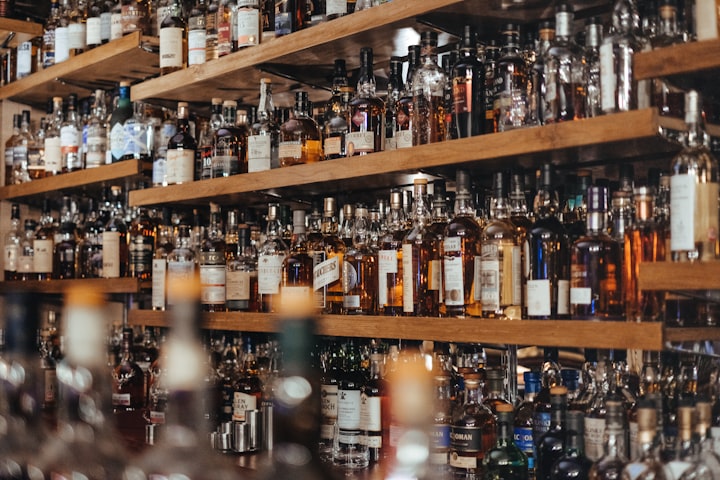
This chimpanzee stumbles across a windfall of overripe plums.
a lot of them have split open,
drawing him to their intoxicating fruity smell.
He gorges himself
and starts offevolved to enjoy some… peculiar consequences.
This unwitting ape has came across a procedure
that people will eventually harness
to create beer, wine, and other alcoholic drinks.
The sugars in overripe fruit attract microscopic organisms
known as yeasts.
as the yeasts feed at the fruit sugars they produce a compound referred to as ethanol—
the form of alcohol in alcoholic liquids.
This manner is referred to as fermentation.
nobody knows precisely whilst
humans commenced to create fermented drinks.
The earliest acknowledged proof comes from 7,000 BCE in China,
wherein residue in clay pots
has found out that humans were making an alcoholic beverage
from fermented rice, millet, grapes, and honey.
within a few thousand years,
cultures all over the world had been fermenting their personal liquids.
ancient Mesopotamians and Egyptians made beer throughout the 12 months
from stored cereal grains.
This beer turned into available to all social lessons,
and employees even obtained it in their every day rations.
in addition they made wine,
but due to the fact the weather wasn’t ideal for growing grapes,
it changed into a unprecedented and high priced delicacy.
via contrast, in Greece and Rome, in which grapes grew greater easily,
wine was as readily to be had as beer was in Egypt and Mesopotamia.
because yeasts will ferment essentially any plant sugars,
historical peoples made alcohol
from some thing vegetation and flora grew where they lived.
In South the usa, human beings made chicha from grains,
every so often adding hallucinogenic herbs.
In what’s now Mexico, pulque, made from cactus sap,
changed into the drink of choice,
whilst East Africans made banana and palm beer.
And in the place that’s now Japan, humans made sake from rice.
almost every location of the globe had its personal fermented liquids.
As alcohol consumption became a part of regular lifestyles,
some government latched onto effects they perceived as high quality—
Greek physicians taken into consideration wine to be exact for fitness,
and poets testified to its creative features.
Others have been greater concerned about alcohol’s capability for abuse.
Greek philosophers promoted temperance.
Early Jewish and Christian writers in Europe included wine into rituals
however considered immoderate intoxication a sin.
And in the center east, Africa, and Spain,
an Islamic rule in opposition to praying while under the influence of alcohol
gradually solidified into a popular ban on alcohol.
historical fermented drinks had notably low alcohol content.
At approximately thirteen% alcohol,
the by using-products wild yeasts generate in the course of fermentation
emerge as poisonous and kill them.
when the yeasts die,
fermentation stops and the alcohol content material tiers off.
So for thousands of years, alcohol content turned into constrained.
that modified with the discovery of a technique
called distillation.
ninth century Arabic writings describe boiling fermented liquids
to vaporize the alcohol in them.
Alcohol boils at a lower temperature than water,
so it vaporizes first.
seize this vapor, cool it down, and what’s left is liquid alcohol
a whole lot more focused than any fermented beverage.
before everything, these more potent spirits have been used for medicinal purposes.
Then, spirits became an vital exchange commodity
due to the fact, in contrast to beer and wine, they didn’t destroy.
Rum made from sugar
harvested in european colonies in the Caribbean
became a staple for sailors
and became traded to North the usa.
Europeans brought brandy and gin to Africa
and traded it for enslaved people, land,
and goods like palm oil and rubber.
Spirits have become a form of cash in these areas.
during the Age of Exploration,
spirits played a vital position in long distance sea voyages.
sailing from Europe to east Asia and the Americas should take months,
and maintaining water sparkling for the crews turned into a venture.
adding a bucket of brandy to a water barrel kept water sparkling longer
because alcohol is a preservative that kills dangerous microbes.
So through the 1600s,
alcohol had long gone from sincerely giving animals a buzz
to fueling worldwide trade and exploration— together with all their consequences.
As time went on,
its position in human society could most effective get greater complex.
About the Creator
Xihluke
I'm a Journalism graduate, a student teacher and a contnt creator of various forms of content. I naturally love to share information.





Comments
There are no comments for this story
Be the first to respond and start the conversation.